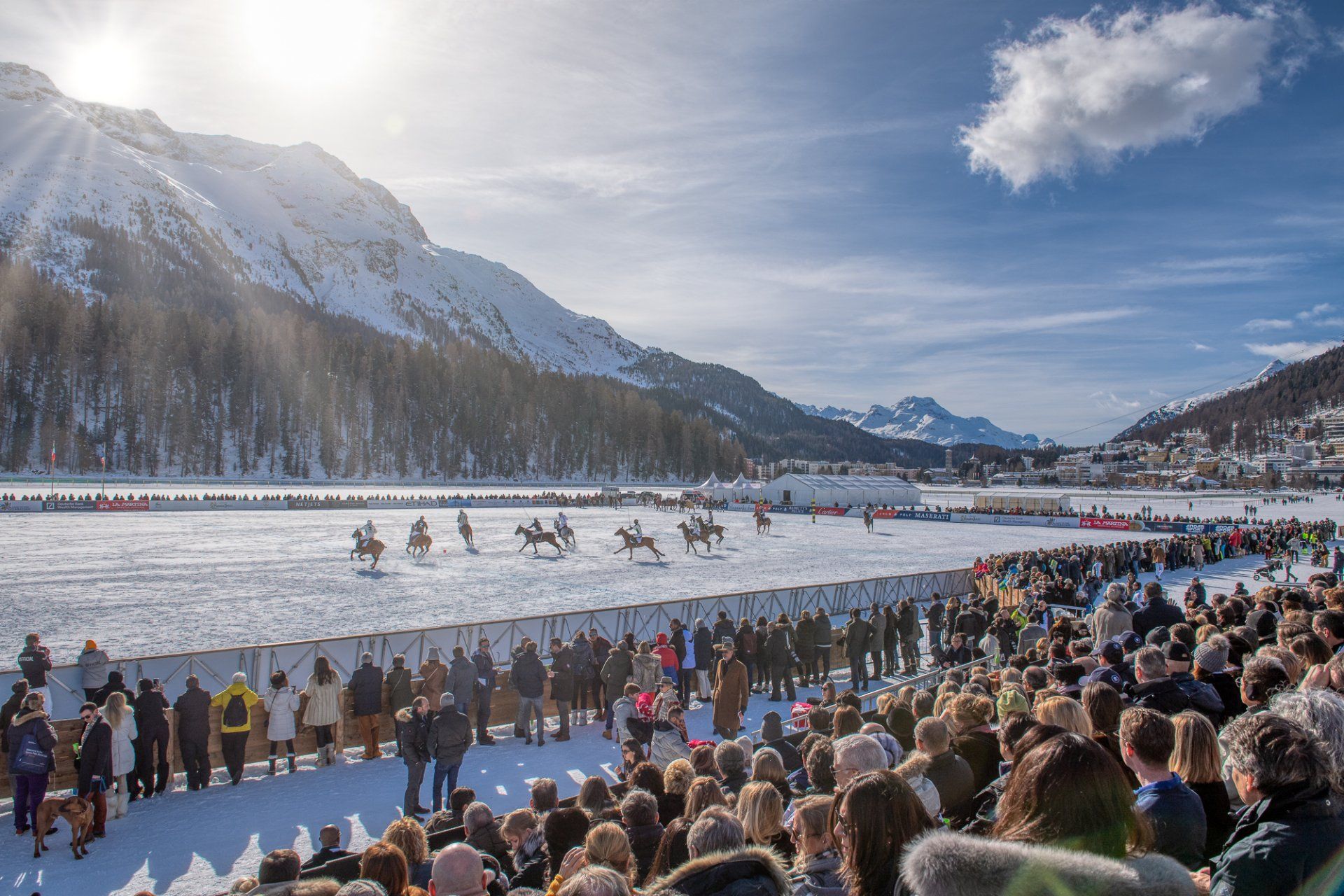All Eyes Turn to the Snow
Snow polo takes over the Alps

Polo is one of the oldest sports in the world. Many different countries claim to be the birthplace of the modern game, but most experts agree that the origins of modern polo can be traced back to horse riding nomads in Central Asia.
Today, polo is played in over 70 countries, it has been an Olympic sport and is played on grass, beaches, snow and deserts.
The birthplace of snow polo is St. Moritz in Switzerland. Although the sport had been played in this alpine setting as far back as 1899, it was not until 1985 that Reto Gaudenzi, the ‘God Father of snow polo’, revived the sport in St. Moritz and added his own unique twist, to turn the traditionally summer sport into a winter pastime, and so snow polo was born.
The first snow polo tournament in the world was played upon the frozen lake in St. Moritz in 1985. The idea of snow polo ignited an international interest in the winter sibling and today polo is played in every corner of the globe, from Aspen in the USA to Tianjin in China. Undoubtedly the world snow polo highlights include The St. Moritz Snow Polo World Cup
, Snow Polo World Cup Kitzbühel
and The St. Regis Snow Polo World Cup Championship in Aspen.
Although snow polo’s routes are firmly grounded in traditional polo, there are some key differences:
1) A standard international polo ground is usually 182m wide by 274m long, which is roughly three times as big as a football pitch!
However, snow polo grounds are usually smaller and in St. Moritz, the playing surface measures 80x200m.
2) All polo ponies are required to wear horse shoes, however in order to avoid the snow clogging up the shoes, snow polo shoes have a rubber tubing which pushes the snow out of the back of the shoe.
3) Studs are screwed into the horse’s shoes to give them better grip. In outdoor polo, just a single stud is fixed to the outside of the rear shoe but in snow polo, due to the potentially slippery surface, two studs are used on both the front and rear shoes.
4) Historically polo balls were made from bamboo or leather covered cork, but nowadays they are made from high-impact plastic moulded into a small white ball. In snow polo though, a white ball is hard to see against the surroundings, so instead they use a slightly larger, orange rubber ball which is easier to see and also travels less far (owing to the smaller snow polo grounds).
5) All players wear polo shirts for matches, which are usually short-sleeved. However as snow polo is much colder, the shirts are long sleeved for warmth.
If you are looking for ‘The Perfect Snow Polo Winter Warmer’ you need look no further as we have you sorted here at British Polo Gin with a selection of our organic gin cocktails.
Lets start with ‘The Meriski’ the ultimate alpine gin cocktail, named after the fabulous accommodation specialists in Meribel. All you need is the following;
• 25 ml British Polo Gin Sloe Gin
• 100 ml cloudy apple juice
• Cinnamon stick
• Orange wheel
• Fresh ginger slither
Method
1. Simmer 100ml cloudy apple juice
2. Add the cinnamon stick & ginger for 10 minutes
3. Pour over 25ml hedgerow foraged British Polo Gin Sloe Gin
4. Garnish with a orange wheel
Alternatively try our famous ‘Sloegasm’ superbly easy and delicious. All you need is the following;
1. 25ml British Polo Sloe Gin
2. 100ml Pol Roger
Method
• Pour 25ml of BPG sloe
into a champagne coupe/flute
• Top up with 100ml of your favourite fizz, we recommend Pol Roger.
Interesting fact of the day, Pol Roger
is Winston Churchill’s favourite tipple, so naturally it has to be British Polo Gin’s favourite too.
Don't forget to subscribe to our stablemates Polo Times
and The Polo Magazine
for thrilling updates from the snow polo on their social media feeds, as well as exciting reports post events, with all the best photos and action at your fingertips.
Photograph courtesy of Kathrin Gralla www.derrotedrache.de